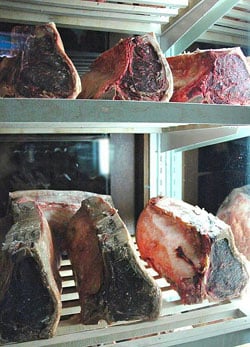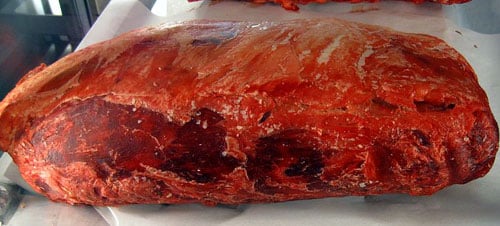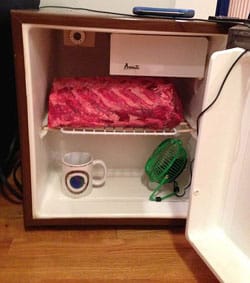Beef aging is a fantastic way to make it more tender and flavorful, turning regular cuts into something truly special. On this page, you’ll find everything you need to know about beef aging, giving you the confidence to try it at home.
Curious about how it works? We’ll dive into both traditional dry-aging and modern wet-aging techniques. The process involves keeping beef in controlled conditions to let natural enzymes break down muscle fibers and evaporate moisture, which enhances the flavor.
Dry aging used to be the standard method, but it’s now considered a premium technique because it’s time-consuming and costly. On the other hand, wet aging is quicker and more affordable, making it the go-to method today.
We’ll walk you through the science behind each method and provide step-by-step instructions for aging beef in your fridge. Soon, you’ll be able to enjoy restaurant-quality beef right at home.
Why do we age beef?
Beef needs to be aged to make it more tender and to bring out the full flavor of the meat. Generally, beef is aged from one to three weeks.
The process changes beef in two ways. Firstly, moisture is evaporated from the muscle, which creates a greater concentration of beef flavor and taste. Secondly, the beef’s natural enzymes break down the connective tissue in the muscle, which leads to a more tender cut of beef.
Before the existence of vacuum bags, aging was always done through the ‘dry aging’ process. Later, butchers discovered the less expensive and more efficient methods of aging beef called the ‘wet aging’ process. Nowadays, the dry aging beef method has become very expensive and can generally only be found being used in posh restaurants.
What happens during the aging process?
A muscle consists of fibers in a housing of connective tissue. These muscle fibers are bundled in a tissue cover . Between the muscle fibers are cross-connections of connective tissue. By breaking down the connective tissue, more tender meat is formed. This is done by two protein-splitting enzymes : calpain and cathepsin, which are naturally present.
A second factor is glycoceen . This muscle sugar is converted to lactic acid during the carcass hanging process, which allows a reduction in the acidity.
In normal English, it means that the juices spread more evenly though the meat and the beefs natural enzymes break down the connective tissue in the muscle, which leads to more tender beef. Properly dry-aged meat will develop a deeply beefy, nutty, and almost cheese-like aroma.
What is the difference between dry aging and wet aging?
Dry aging
After the animal is killed, slaughtered and cleaned, the carcass gets hung to dry for several weeks. The primal cuts like loins, rib eyes and sirloin, are placed in a refrigerator unit. The rest of the animal can be dry aged on racks in special climate-controlled coolers or within a moisture-permeable dry bag. Only the best meat cuts can be aged like this, because the process requires meat with a evenly distributed fat content. This and the costs of dry aging – due to the costs of refrigerators and the loss of more than 20 % of the meat juices – is why dry aged beef is seldom available outside the steak houses and the better butcher shops.
Dry aging at home
Dry-aging can be done at home in the refrigerator. There are two methods: open air, with the use of salt, or with the use of a moisture permeable drybag to protect the meat while it is aging.
I prefer the dry method as shown in the small film below.
What do you need to age your own beef?
– To make sure nothing can damage or interfere with your aging process, I recommend that you get a small refrigerator. They are cheap and can be stored out of the way.
– Salt. The use of the correct salt is crucial. Use coarse sea salt. Two pounds of sea salt will easily age 1000+ lbs. of beef.
– A tray for the salt and a rack for the meat.
Wet aging
Beef that has been aged in a vacuum-sealed bag is called wet aged beef. The method is quick and inexpensive. This is the only reason that most beef is aged this way in the U.S. these days. Wet-aging takes only a few days. Moisture accumulates while in the vacuum bag and the amount depends on the timing of the aging; thus, there is little weight loss.
General meat aging times
Beef : up to 3 months, chilled
Pig : up to 1 week
Large game : up to 4 days
Small game : up to 4 days (not necessary, especially not hares)
Waterfowl : not recommended due to Salmonella and Campylobacteria Risk
All animals must be eviscerated ( gutted )




